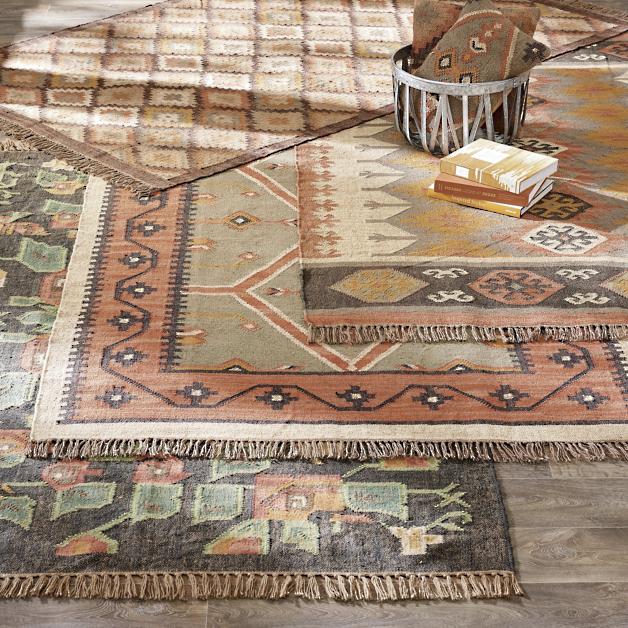
Elevate Your Space: A Comprehensive Guide to Choosing the Right Area Rug
Area rugs are more than just floor coverings; they're an essential design element that can transform a room's aesthetic, comfort, and functionality. With an extensive array of sizes, materials, patterns, and colors available, choosing the right area rug can feel like a daunting task. Whether you're looking to define a space, add warmth, or enhance your home's style, this comprehensive guide will walk you through the process of selecting the perfect area rug that complements your decor and meets your needs.
1. Define Your Purpose
Before delving into the intricate details, consider the purpose of the area rug. Are you looking to anchor furniture, create a focal point, or add visual interest? Understanding the role the rug will play in your space will guide your choices.
2. Select the Right Size
Size matters when it comes to area rugs. The rug's dimensions should align with the room's layout and furniture placement. A common mistake is choosing a rug that's too small for the space. Ideally, a rug should encompass the main furniture pieces, providing a comfortable and cohesive look.
3. Material Matters
The material of the rug impacts its durability, comfort, and style. Wool rugs are renowned for their softness and resilience, making them a popular choice. Natural fibers like jute and sisal add texture to casual spaces, while synthetic fibers like nylon offer practicality in high-traffic areas.
4. Consider the Style
The rug's design should harmonize with your existing decor. For a contemporary look, opt for rugs with geometric patterns or abstract designs. Traditional spaces can benefit from oriental or Persian rugs, while bohemian settings welcome eclectic patterns and colors.
5. Color Coordination
Color is a key consideration when selecting an area rug. Choose hues that complement or contrast with your furniture and wall colors. Neutrals like beige or gray are versatile choices, while bold colors can add drama or create a focal point.
6. Texture and Pile Height
Texture adds depth and visual interest to a room. Consider the pile height, which is the thickness of the rug's fibers. Low-pile rugs are easy to clean and ideal for high-traffic areas, while high-pile rugs offer plush comfort but may require more maintenance.
7. Pattern Play
Patterns can enhance the character of your space. If your furniture and decor are understated, a bold patterned rug can serve as a statement piece. Conversely, if your decor is vibrant, a more subdued pattern can create balance.
8. Consider Maintenance
Different rug materials require varying levels of maintenance. Wool rugs are durable and naturally stain-resistant, while silk rugs are delicate and best suited for low-traffic areas. Consider your lifestyle and willingness to commit to regular cleaning and care.
9. Room-Specific Considerations
Each room has its unique requirements for an area rug. In the living room, choose a rug that accommodates the seating area. In the dining room, ensure the rug is large enough to accommodate the table and chairs even when they're pulled out.
10. Layering with Rugs
Layering rugs can add depth and dimension to your space. Pair a smaller rug with a larger one to create a cohesive look. This technique works well in open-concept spaces or when you want to delineate different areas within a room.
11. Rug Pads for Comfort and Protection
Invest in a rug pad to enhance comfort and protect your floors. Rug pads prevent slipping, provide extra cushioning, and extend the life of your rug. Choose a pad that's suitable for your floor type and the rug's material.
12. Budget Considerations
Set a budget for your area rug, taking into account factors like size, material, and quality. Rugs come in a wide price range, so you can find options that align with your budget while still meeting your style preferences.
13. Visualize the Final Look
Before making a decision, visualize how the rug will look in your space. Some retailers offer virtual tools that allow you to preview the rug in your room. This can help you make an informed choice and avoid any surprises.
14. Seek Expert Advice
If you're unsure about which rug to choose, seek advice from interior designers or rug experts. Their insights can guide you toward the right rug that suits your style, needs, and budget.
15. Trust Your Instincts
Ultimately, trust your instincts when choosing an area rug. It's a personal decision that should reflect your taste and preferences. Choose a rug that resonates with you and enhances the ambiance of your space.
In conclusion, selecting the right area rug requires thoughtful consideration of various factors, from size and material to style and maintenance. By understanding your space's needs and your own design preferences, you can confidently choose an area rug that elevates your decor, adds comfort, and creates a harmonious and inviting atmosphere in your home.
